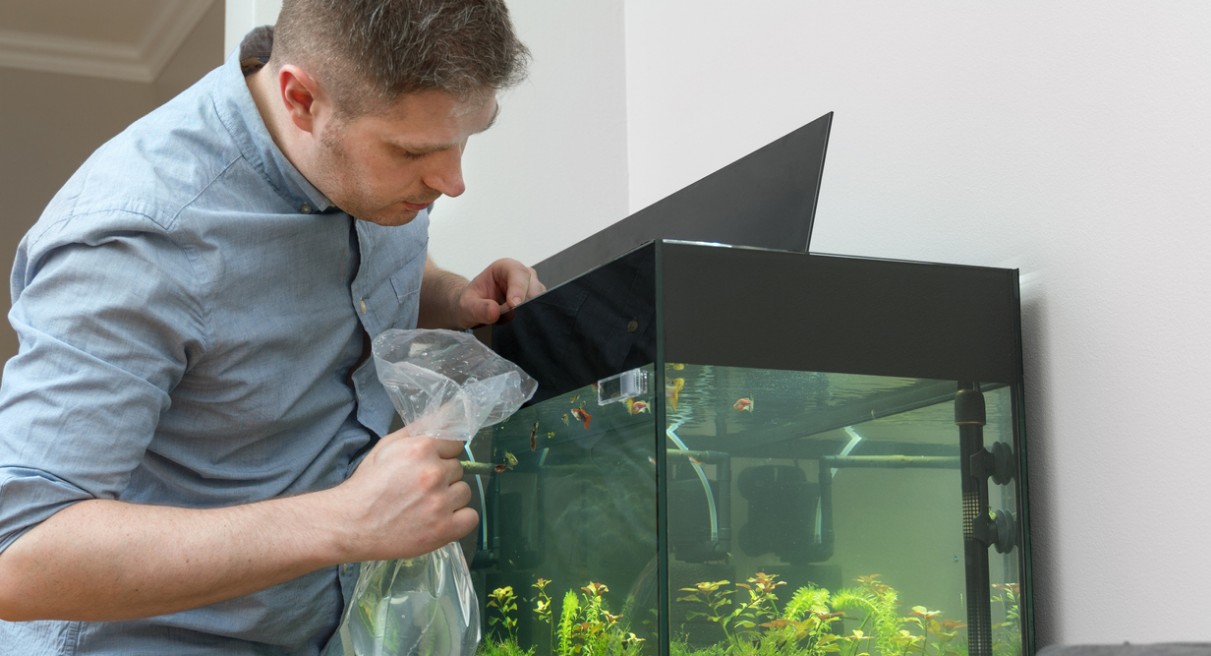Fish tanks are delicate and require proper care during a move. Moving a fish tank can be challenging as you have to ensure the safety of both the fish and the tank. However, with proper planning and care, you can move your fish tank successfully to your new home.
1. Preparing the Fish Tank for the Move
Before moving your fish tank, you need to prepare it for the move. Here are the steps to follow:
Draining the Tank
The first step is to drain the tank. You need to remove all the water from the tank, including the gravel and decorations. Start by unplugging all the electrical appliances, including the filter, heater, and air pump. Then, using a siphon, drain the water from the tank into a clean bucket or container.
Removing the Decorations and Accessories
Once the tank is empty, remove all the decorations and accessories from the tank. Carefully remove the plants, rocks, and other decorative items, and place them in a separate container.
Packing the Accessories and Decorations
To avoid damage to the accessories and decorations, you need to pack them carefully. Use bubble wrap or newspaper to wrap the items before placing them in a box. Make sure to label the box so that you know which items are in it.
2. Preparing the Fish for the Move
Before you move your fish, you need to prepare them for the journey. Here’s what you need to do:
Feeding the Fish
You need to feed your fish 24 hours before the move. This will ensure that they have enough energy for the journey. However, don’t overfeed them as excess food can cause pollution in the tank.
Catching the Fish
Catching the fish can be challenging, but you need to do it carefully to avoid injuring them. Use a fish net to catch the fish and transfer them to a clean plastic bag filled with tank water. Make sure to fill the bag with enough water to cover the fish.
Transporting the Fish
Transporting the fish requires care and attention. Place the plastic bags containing the fish in a polystyrene box or a cooler with a lid. This will protect the fish from sudden temperature changes and keep them safe during transportation.
3. Moving the Fish Tank
Moving the fish tank requires some effort, but it’s not impossible. Here’s what you need to do:
Moving the Empty Fish Tank
If your fish tank is small and lightweight, you can move it empty. Carefully lift the tank and place it in a secure box or container. Make sure to label the box to avoid confusion during transportation.
Moving the Full Fish Tank
Moving a full fish tank requires more effort and care. Start by placing the tank on a flat surface, and then cover the top of the tank with a lid. This will prevent the water from spilling during transportation. Next, carefully lift the tank and place it on a sturdy board or platform with wheels. Secure the tank to the platform with straps or bungee cords to prevent it from shifting during transportation.
4. Setting up the Fish Tank in the New House
Once you have moved the fish tank to your new home, it’s time to set it up again. Here’s what you need to do:
Reassembling the Tank
Start by assembling the tank again. Put the gravel and decorations back into the tank, and then add clean water to the tank.
Refilling the Tank
Fill the tank with water, and then add a water conditioner to the tank to remove any chlorine or other chemicals from the water. Once the water is conditioned, you can plug in the electrical appliances, including the filter, heater, and air pump.
Acclimatizing the Fish
Before adding the fish back into the tank, you need to acclimatize them to the new water conditions. This can be done by slowly adding water from the new tank into the plastic bag containing the fish. After an hour, you can release the fish back into the tank.
5. Conclusion
Moving a fish tank can be challenging, but with proper planning and care, you can move your fish tank safely to your new home. Remember to prepare the tank and the fish for the move, and to transport the tank and the fish with care. Once you have moved the tank to your new home, follow the steps to set it up again, and acclimatize the fish to the new water conditions.
6. FAQs
- Can I move the fish in the tank?
- No, you should never move the fish in the tank as it can cause stress and injury to the fish.
- How long can the fish stay in the plastic bags during transportation?
- The fish can stay in the plastic bags for up to 6 hours, as long as the bags are kept in a cool and dark place.
- Can I transport the tank and the fish in the same vehicle?
- Yes, you can transport the tank and the fish in the same vehicle, as long as you take proper precautions to ensure their safety.
- Should I clean the tank before moving it?
- No, you should not clean the tank before moving it as it can disrupt the natural balance of the tank.
- How long does it take for the fish to acclimatize to the new water conditions?
- It usually takes about an hour for the fish to acclimatize to the new water conditions.

